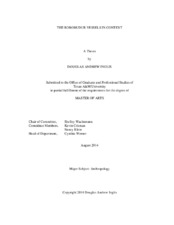| dc.description.abstract | Eleven boats are depicted in the bas-reliefs that cover the walls of Borobudur, a ninth century C.E. Buddhist monument located in central Java. These vessels are an important source of information about the complexities of classical Indonesian shipbuilding, and contain data about rigging elements, rope use, fastening, rowing configurations, and outrigger construction. They represent critical evidence of physical structures that have not survived in the archaeological record. Scholars such as Hornell, Mookerji, Needham, Horridge, Manguin, Ray, and others have used the reliefs to
improve our understanding of maritime trade, seafaring, and ship construction in ancient Southeast Asia. While the technical merits of the Borobudur Ships have been thoroughly discussed, a great deal of cultural data has been overlooked.
The objective of this thesis is to place the Borobudur Vessels in their proper religious, artistic, and narrative context. It addresses three central questions: 1.) What can the Buddhist narratives tell us about the seafaring scenes depicted at Borobudur? 2.) How did the artistic framework influence the representation of the vessels in the reliefs? 3.) What do Borobudur’s reliefs tell us about contemporaneous seafaring in the region?
This study will demonstrate that the narrative and religious context of the Borobudur Vessels directly influenced how the panels were designed, how the ships were portrayed, and how we should interpret them. The Buddhist narratives associated with the vessels provide deeper context for everything we see happening on board. The stories reveal the stakes involved in seafaring, explain what was expected of a mariner, and illustrate the skills and mindset needed to survive on an ocean-going vessel. The reliefs themselves provide a window on how seafaring stories were envisioned in ninth century C.E. Java. The 94 mariners depicted aboard the ships portray emotions, such as fear, courage, torpor, and astonishment, as well as abstract concepts such a teamwork,
self-sacrifice, and leadership. This thesis will show that the Borobudur Vessels represent a concentrated effort to capture the struggles, heroism, and drama of sailing. They are material evidence of the intimate connection between Buddhism and seafaring, and provide unique insights into the Javanese perception of sailing, the ocean, and its dangers. | en |


